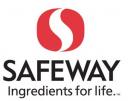Behaving Our Way out of the Healthcare Crisis
Monday, July 20th, 2009 From time to time I blog about the role of design, especially cognitive design, in resolving the US healthcare quality/cost crisis. My basic argument is always the same – most costs flow from otherwise avoidable health behaviors (poor eating/drinking habits, inactivity, ineffective self-care, etc.) and so solving the problem means designing programs for achieving and sustaining individual behavior change.
From time to time I blog about the role of design, especially cognitive design, in resolving the US healthcare quality/cost crisis. My basic argument is always the same – most costs flow from otherwise avoidable health behaviors (poor eating/drinking habits, inactivity, ineffective self-care, etc.) and so solving the problem means designing programs for achieving and sustaining individual behavior change.
One firm that seems to be making impressive progress along these lines is Safeway. Check out the post, Incentivizing Health Behaviors, on the Healthcare X Prize Blog.
“Safeway’s plan capitalizes on two key insights gained in 2005. The first is that 70% of all health-care costs are the direct result of behavior. The second insight, which is well understood by the providers of health care, is that 74% of all costs are confined to four chronic conditions (cardiovascular disease, cancer, diabetes and obesity). Furthermore, 80% of cardiovascular disease and diabetes is preventable, 60% of cancers are preventable, and more than 90% of obesity is preventable.”
Very similar finding to Halvorson’s argument in his book Healthcare Reform Now!.
 The Safeway program uses the same model as auto insurance which has been very successful in changing driver behavior via financial incentives. At Safeway, the cost of health insurance to employees is behavior-based (tobacco, weight, blood pressure, cholesterol) and achieving top scores can mean a reduction of $1560 in annual premiums for a family. They offered this level of incentive and achieved a 40% reduction in cost (at the same premium level) over four years.
The Safeway program uses the same model as auto insurance which has been very successful in changing driver behavior via financial incentives. At Safeway, the cost of health insurance to employees is behavior-based (tobacco, weight, blood pressure, cholesterol) and achieving top scores can mean a reduction of $1560 in annual premiums for a family. They offered this level of incentive and achieved a 40% reduction in cost (at the same premium level) over four years.
Lesson for designing behaviors change: Link real $$ to vital behaviors to create value for all parties.
Something about realigning incentives that changes behavior almost every time.